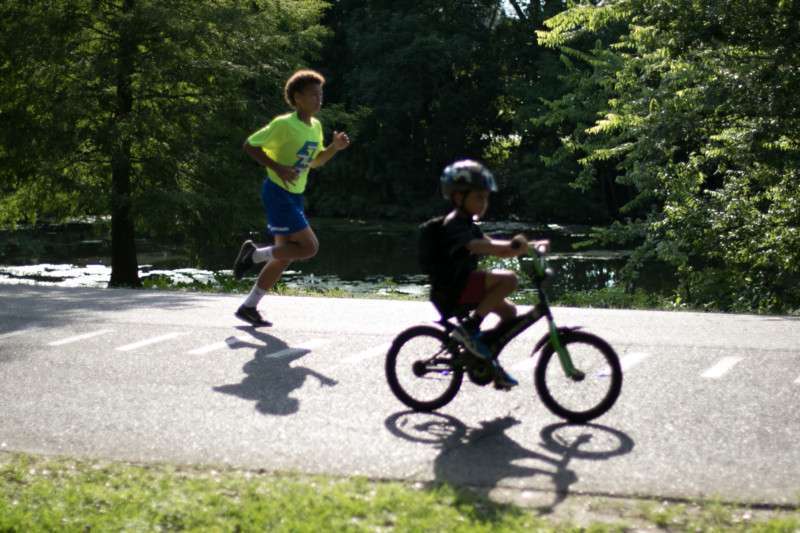The Audubon Commission, which oversees facilities managed by Audubon Nature Institute, approved a new Audubon Park Master Plan at its meeting on June 27.
Developed in conjunction with the award-winning architecture firm Eskew+Dumez+Ripple, the plan was approved by a unanimous vote by the Commission culminating six months of work that included four public sessions designed to solicit feedback and promote community dialogue on the master plan.
Eskew+Dumez+Ripple is a nationally honored for producing innovative projects grounded by a strong understanding of context, culture, and environment. They build across the country and around the world, with the goal of integrating beauty and performance. Click here to view a broad spectrum of their extensive work on projects such as Crescent Park, Children’s Hospital, and the Baton Rouge Riverfront Master Plan.
Community members and visitors to Audubon Park had multiple means of communication including 1,000 surveys, 500 in-person intercepts, hundreds of comments, research, and four well-attended public meetings. Audubon reached an audience of nearly 2.5 million through social media, paid advertising, email marketing, outreach to local media, and a public engagement website to solicit feedback.
Balance of land uses in Audubon Park emerged as the focal point of the public meetings.
The Master Plan’s key areas of focus include: maintaining, protecting, and preserving the landscape; embracing sustainability; and maintaining current balance with no further program expansion.
“We want to offer our heartfelt thanks to everyone who took time out of their busy lives to participate in this process,’’ said Audubon Nature Institute President and CEO Ron Forman. “The clear message we heard from the public was to keep Audubon Park open and accessible to everyone. We are committed to doing just that by balancing the needs of those who want to exercise outdoors and those looking for a quiet place to relax.’’
The Master Plan calls for:
1. Maintaining a balance & variety of land uses
2. More and improved lighting in well-used areas of the park
3. Enhancing security during & after park hours
4. Maintaining tennis, baseball, soccer, horse stables, swimming, and playgrounds
5. Stewardship of the ecology through tree management
6. Addressing vehicular traffic flow on Magazine Street and pedestrian/bicycle crossings
7. Improving Riverview pedestrian circulation and traffic congestion
8. Improving drainage in sensitive areas using “green” infrastructure
9. Improving architectural features in the park including Hurst Bridge, Shelter 13, and Hyams Fountain
10. Establishing a comprehensive water management plan
11. Improving signage and wayfinding
12. Devising a plan for strategic future acquisitions
Audubon Nature Institute recently launched a campaign to grow capital and endowment funds dedicated to Audubon Park for improvements. Audubon Park currently receives no dedicated city funds for operations and is not included in the millage that supports Audubon Zoo, so endowed funds are a reliable source for ongoing operations.
While comments were welcomed on both the Zoo and the golf course, the Master Plan focuses on Audubon Park because uses of these areas are well-established and are not targeted for change during this plan period. Because state capital outlay dollars have been invested in both the golf course and in major Zoo projects, Audubon is bound by state requirements that those projects are expected to last at least 20 years.
Golf has been a part of the Audubon Park experience since 1898, when the course was opened. The golf course is a historic and aesthetic feature of Audubon Park that provides public recreation opportunities for the residents of our community. It is a well-established use within its boundary—as such its use is not targeted for change within the Master Plan.
Audubon Zoo, whose capital priorities are guided by global conservation needs and accredited in best practices in animal care, is recognized by USA Today as a Top 10 Zoo, enjoying more than 800,000 visitors annually.
“This is a model community engagement process for future projects and planning,” said Audubon Commission President J. Kelly Duncan. “We look forward to further positive dialogue about Audubon projects through additional meetings and townhalls in the future.”
The Commission is planning additional public meetings for items that need more conversation including Shelter 13 and Audubon Tennis Courts.
To review the Master Plan, please visit AudubonParkMasterPlan.org






